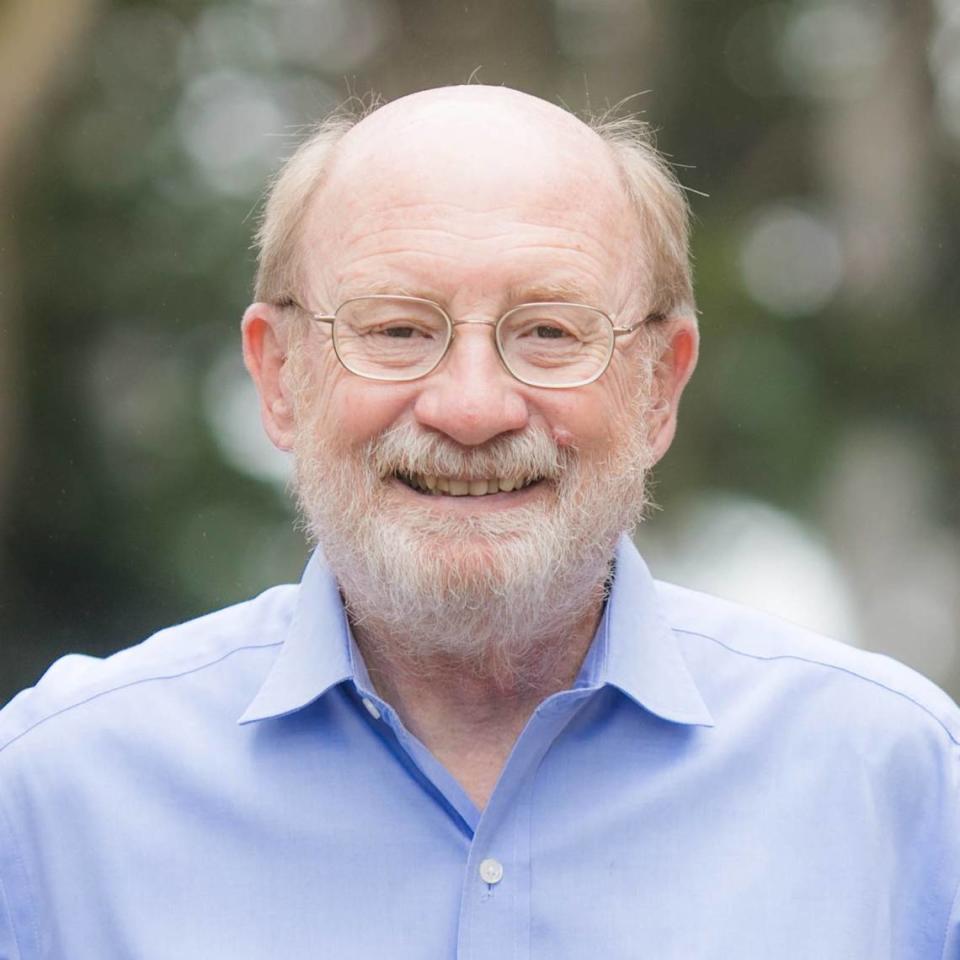New bill would help create redistricting commission for SLO County. Here’s what’s next
- Oops!Something went wrong.Please try again later.
San Luis Obispo County is one step closer to establishing an independent redistricting commission — which means voters, rather than elected officials, will chose the county’s future supervisor district boundaries.
County counsel Rita Neal presented a draft of the bill designed to create the commission at Tuesday’s San Luis Obispo County Board of Supervisors meeting.
Senate Bill 977, authored by State Senator John Laird, will create an appointed, nonpartisan group of citizens that replace the board in approving district boundaries.
The board voted 3-2 to endorse the draft bill and direct Supervisor Bruce Gibson to testify at state Senate hearings in support of the bill. Supervisors John Peschong and Debbie Arnold dissented.
“What we are creating is a process that will bring transparency into SLO County,” Supervisor Jimmy Paulding said during discussion.
Community members asked for an independent redistricting commission after the previous board majority approved a radically redrawn district map that some said favored Republicans in 2021.
San Luis Obispo County Citizens for Good Government and the SLO County League of Women Voters sued the county, arguing the map was gerrymandered. On March 21, 2023, the new board majority voted to settle the lawsuit and select a new map.
In January, the board voted to direct county staff to work with Laird’s office to draft a bill to establish a commission for the county.

Who will serve on the commission?
The commission will have 11 members, according to Neal. Depending on edits to the bill draft, the commission could be structured in one of two ways: where at least two commission members live in each of the five supervisorial districts with one at-large member, or where five members are selected from each district alongside six at-large members.
Members will need to meet a list of requirements. For example, they must be registered to vote in the county, and they cannot be elected officials, employees of elected officials or campaigns, lobbyists or their close family members, Neal said.
Prospective members would apply to the county elections official, who would eliminate applicants who don’t meet the criteria.
The elections official would then select up to 60 applicants and publicly publish their names. For the next 30 days, the official could disqualify an applicant if it is revealed that they do not meet the criteria.
The official will divide the remaining applicants into groups based on what supervisorial district they live in. Then, at a regularly scheduled board meeting, the clerk of the board will randomly select one commissioner from each district. Those five commissioners will conduct interviews and then appoint six more members at another public meeting.
If a commissioner resigns or is removed, the commission chair will chose a replacement from the previously mentioned pool of qualified applicants, according to Neal. The replacement must have the same political party affiliation and live in the same district as their predecessor, she said.
The commission will hold five public meetings before drawing the map — one in each district, and three public meetings after drawing the map. Seven or more votes would be required for any action, according to Neal.
The chosen map must comply with the California Elections Code, Neal said.
Should the state create the county’s redistricting commission?
Removing the power to draw district boundaries from elected officials will “ensure that the redistricting process is done with integrity,” Paulding said.
Enlisting qualified members of the public to select district boundaries will prevent politicians from abusing their power and selecting district boundaries that support their re-election, Paulding said at a previous meeting. Gibson agreed.
“This is a matter of basic democracy,” Gibson said Tuesday.
Supporting an independent redistricting commission could cost the county between $750,000 and $1 million in 2030, money that would be pulled from the county’s General Fund, according to a staff report. Costs include mapping tools, consulting services, outreach, demographic analysis, translation services and more.
Peschong thought the process was too expensive — especially when the state Legislature could pass a separate law mandating redistricting commissions for all counties before the next round of redistricting in 2030. He wanted to wait before taking action.
“I think it’s probably too early, too expensive and I think we should wait and see what the Legislature comes up with for the rest of the state,” Peschong said.
Arnold also didn’t support an independent redistricting commission. She said that elected officials better understand the needs of their district and are better equipped to select district boundaries than regular citizens.
What’s next?
The bill will work its way through various Senate committees in April before heading to the state Senate for a final vote this spring, according to Neal.
If the Senate passes the bill, various state Assembly committees will review the bill before sending it to for a final vote.
Gibson will have opportunities to speak about the bill on behalf of the board at each of the hearings. Ortiz-Legg and Paulding will serve as alternates if Gibson can’t make a meeting.
If the bill is passed by both houses in the state Legislature, Gov. Gavin Newsom will have the chance to sign the bill. The bill should be ready for his signature by August, Neal said.
If all goes according to plan, the bill would take effect as law in January.

